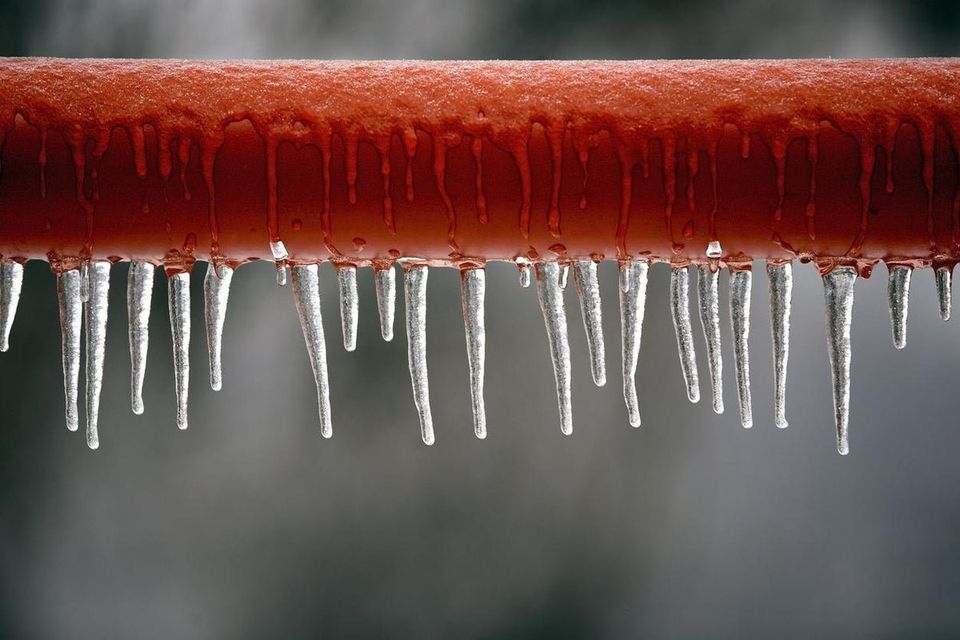How to Protect Your Plumbing from Freezing: Key Advice
How to Protect Your Plumbing from Freezing: Key Advice
Blog Article
They are making several good observations on How to prepare your home plumbing for winter weather overall in the content on the next paragraphs.

Cold weather can ruin your pipes, especially by freezing pipelines. Right here's how to stop it from occurring and what to do if it does.
Introduction
As temperature levels drop, the threat of icy pipes boosts, possibly leading to costly repairs and water damage. Understanding exactly how to avoid icy pipes is crucial for house owners in cold environments.
Understanding Frozen Pipelines
What creates pipes to freeze?
Pipelines freeze when subjected to temperature levels below 32 ° F (0 ° C) for prolonged durations. As water inside the pipes freezes, it broadens, taxing the pipe walls and possibly creating them to break.
Threats and damages
Frozen pipes can result in water system disruptions, building damages, and pricey fixings. Ruptured pipelines can flooding homes and trigger comprehensive structural damage.
Indicators of Frozen Water Lines
Determining frozen pipelines early can avoid them from rupturing.
How to recognize icy pipes
Look for decreased water circulation from taps, unusual smells or noises from pipelines, and visible frost on exposed pipelines.
Prevention Tips
Shielding vulnerable pipelines
Wrap pipelines in insulation sleeves or utilize warm tape to safeguard them from freezing temperature levels. Focus on pipelines in unheated or external locations of the home.
Home heating strategies
Keep indoor rooms properly warmed, particularly locations with plumbing. Open up cabinet doors to allow cozy air to flow around pipes under sinks.
Securing Outside Pipes
Yard hoses and exterior taps
Disconnect and drain garden hose pipes before winter season. Install frost-proof spigots or cover exterior taps with protected caps.
What to Do If Your Pipelines Freeze
Immediate activities to take
If you think frozen pipelines, maintain faucets open to alleviate pressure as the ice thaws. Utilize a hairdryer or towels taken in warm water to thaw pipes gradually.
Long-Term Solutions
Structural adjustments
Consider rerouting pipelines away from outside walls or unheated locations. Add added insulation to attics, cellars, and crawl spaces.
Upgrading insulation
Buy top quality insulation for pipelines, attics, and wall surfaces. Proper insulation assists keep consistent temperature levels and lowers the threat of frozen pipes.
Verdict
Stopping frozen pipes needs aggressive steps and quick feedbacks. By understanding the causes, indications, and safety nets, homeowners can protect their plumbing during cold weather.
5 Ways to Prevent Frozen Pipes
Drain Outdoor Faucets and Disconnect Hoses
First, close the shut-off valve that controls the flow of water in the pipe to your outdoor faucet. Then, head outside to disconnect and drain your hose and open the outdoor faucet to allow the water to completely drain out of the line. Turn off the faucet when done. Finally, head back to the shut-off valve and drain the remaining water inside the pipe into a bucket or container. Additionally, if you have a home irrigation system, you should consider hiring an expert to clear the system of water each year.
Insulate Pipes
One of the best and most cost-effective methods for preventing frozen water pipes is to wrap your pipes with insulation. This is especially important for areas in your home that aren’t exposed to heat, such as an attic. We suggest using foam sleeves, which can typically be found at your local hardware store.
Keep Heat Running at 65
Your pipes are located inside your walls, and the temperature there is much colder than the rest of the house. To prevent your pipes from freezing, The Insurance Information Institute suggests that you keep your home heated to at least 65 degrees, even when traveling. You may want to invest in smart devices that can keep an eye on the temperature in your home while you’re away.
Leave Water Dripping
Moving water — even a small trickle — can prevent ice from forming inside your pipes. When freezing temps are imminent, start a drip of water from all faucets that serve exposed pipes. Leaving a few faucets running will also help relieve pressure inside the pipes and help prevent a rupture if the water inside freezes.
Open Cupboard Doors
Warm your kitchen and bathroom pipes by opening cupboards and vanities. You should also leave your interior doors ajar to help warm air circulate evenly throughout your home.
:strip_icc()/snow-outdoor-faucet-pipes-4af65d1e5e904fb1aa7bf74071fe5d89.jpg)
Hopefully you enjoyed reading our post about How to Prevent Your Pipes From Freezing. Many thanks for taking a few minutes to browse our content. Don't hesitate to take a moment to promote this page if you liked it. I recognize the value of reading our article about How to Prevent Your Pipes From Freezing.
Schedule A Service Call Report this page